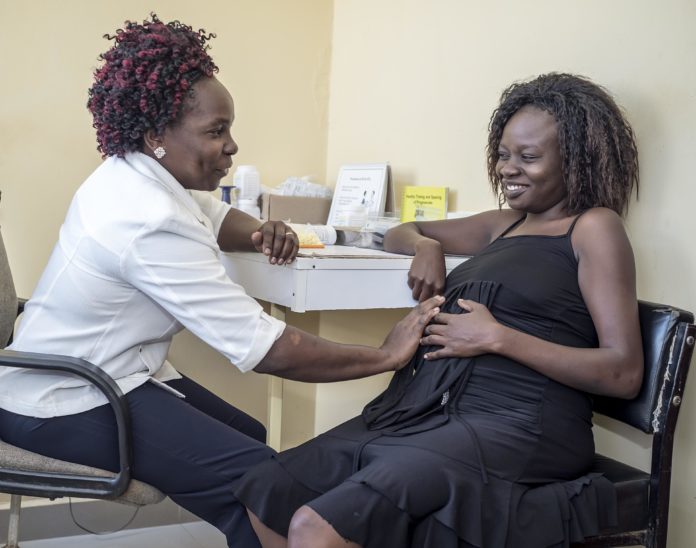By: Christian Conteh
The 2021 World Malaria Report has revealed that the African Region accounts for 95% of cases and 96% of global deaths.
The report by the World Health Organisation (WHO) estimates a total of 241 million malaria cases and 627,000 malaria deaths worldwide in 2020, representing about 14 million more cases in 2020 compared to 2019 and 69 000 more deaths.
Approximately two-thirds of these additional deaths (47 000) were linked to disruptions in the provision of malaria prevention, diagnosis and treatment during the pandemic.
Between 2019 and 2020, the globally estimated number of malaria cases increased from 213 million to 228 million, and deaths from 534 000 to 602 000, with the African Region having the chunk of the cases and deaths the rate of progress in both cases and deaths has stalled in many countries with moderate or high malaria transmission.
The increase in the number of cases and deaths have been linked to the outbreak of COVID-19, which it (the report) says has disrupted malaria services.
However, the report says the situation could have been far worse in the early days of the pandemic. A projection by the institution said that with severe service disruptions, malaria deaths in sub-Saharan Africa could potentially double in 2020.
Luckily it confirms that many countries took urgent action to step up malaria control programmes, averting this worst-case scenario.
“Sub-Saharan Africa continues to carry the heaviest malaria burden, accounting for about 95% of all malaria cases and 96% of all deaths in 2020. About 80% of deaths in the region are among children under five (5) years of age. The pandemic struck at a point when global progress against malaria had already plateaued.”
By around 2017, there were signs that the phenomenal gains made since the year 2000 including a 27% reduction in global malaria case incidence and a nearly 51% reduction in the malaria mortality rate were stalling.
“Even before the COVID-19 pandemic struck, global gains against malaria had levelled off,” said Dr Tedros Adhanom Ghebreyesus, WHO Director-General. “Thanks to the hard work of public health agencies in malaria-affected countries, the worst projections of COVID’s impact have not come to pass. Now, we need to harness that same energy and commitment to reverse the setbacks caused by the pandemic and step up the pace of progress against this disease.”
Delivering Malaria Services Against the Odds
Despite the challenges imposed by COVID-19, about three-quarters (72%) of insecticide-treated mosquito nets had been distributed in malaria-endemic countries as planned by the end of 2020. Thirteen countries in Africa’s Sahel subregion reached 11.8 million more children with preventive antimalarial medicines during the high-transmission rainy season in 2020 compared to 2019.
Some countries, particularly with a low burden of malaria and relatively strong health systems, even registered gains against malaria during the pandemic. China and El Salvador were certified by WHO as malaria-free in 2021, and the Islamic Republic of Iran attained 3 consecutive years of zero indigenous cases in 2020.
Despite these achievements, the WHO African Region saw a 12% increase in malaria deaths in 2020 over the previous year, highlighting the consequences of even moderate service disruptions in a population at risk of malaria.
“While African countries rallied to the challenge and averted the worst predictions of fallout from COVID-19, the pandemic’s knock-on effect still translates to thousands of lives lost to malaria,” said Dr Matshidiso Moeti, WHO Regional Director for Africa.
“African governments and their partners need to intensify their efforts so that we do not lose even more ground to this preventable disease,” Dr Moeti said.
According to the report, 15 countries with a high burden of malaria reported reductions in malaria testing of more than 20% in April-June 2020 compared to the same period in 2019. National Malaria Programmes distributed about 48 million fewer courses of treatment in 2020 compared to the previous year. And, of the world’s 11 highest-burden countries, only India registered progress against malaria. The 10 other countries, all in Africa, reported increases in cases and deaths.
Meeting Global Targets
According to the report, progress towards the 2020 milestones of the WHO global malaria strategy was substantially off track. In 2020, the global malaria case incidence rate was 59 cases per 1000 people at risk against a target of 35 putting it off track by 40%. The global mortality rate was 15.3 deaths per 100 000 people at risk against a target of 8.9 putting it off track by 44%.
Reaching the 2030 goals of the WHO malaria strategy, including a 90% reduction in global malaria incidence and mortality rates by 2030, will require new approaches, new tools and the better implementation of existing ones.
Meeting global targets will also require robust funding. According to the report, current funding levels (estimated at US$3.3 billion in 2020) will need to more than triple, reaching US$ 10.3 billion per year by 2030.
Source: World Malaria Report 2021. Geneva: World Health Organization; 2021. (WHO Media)









